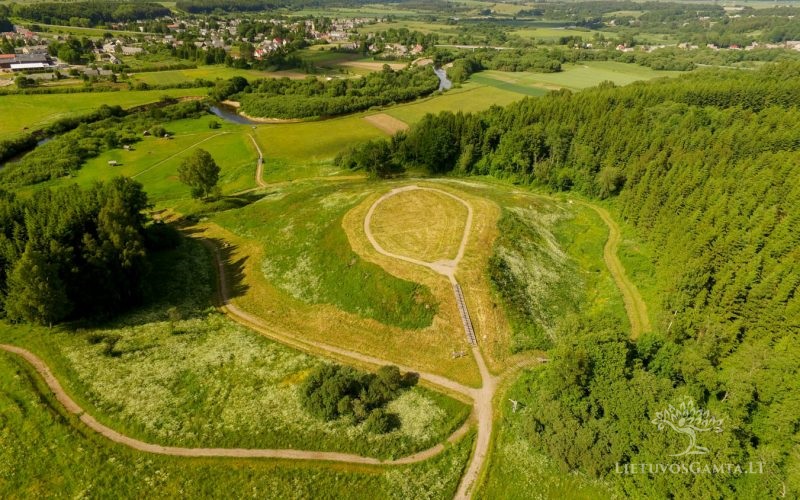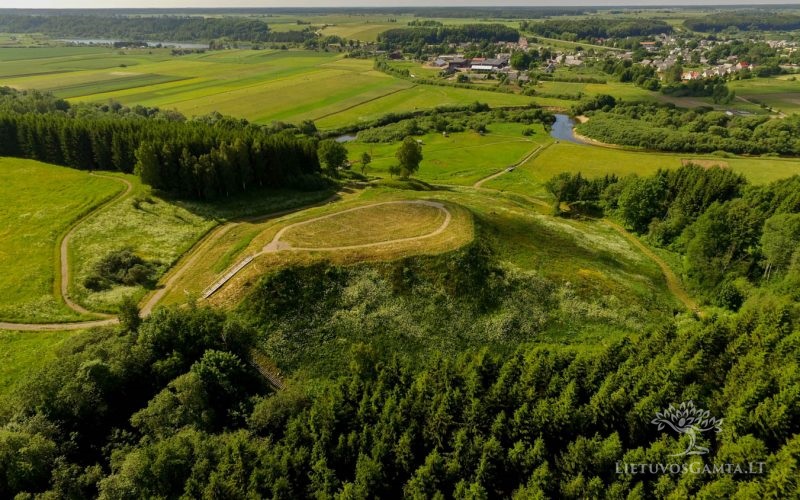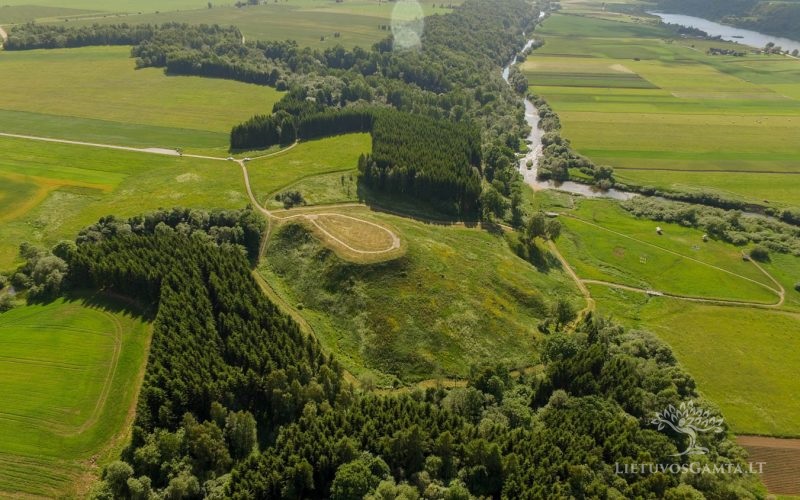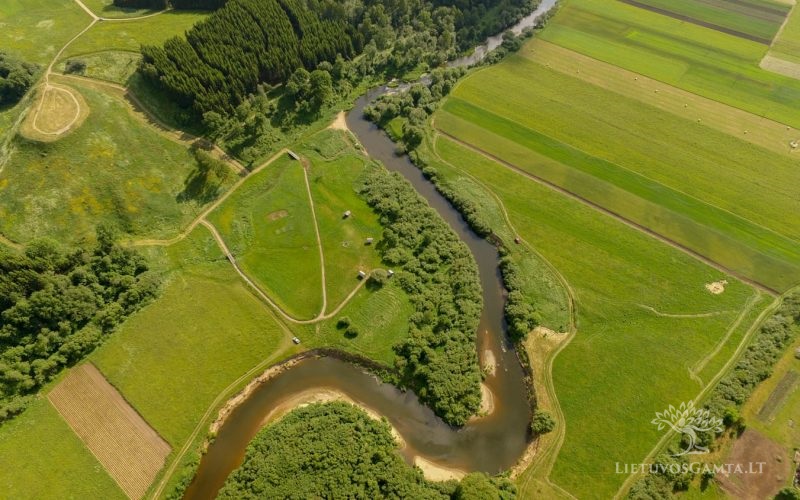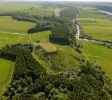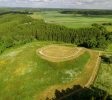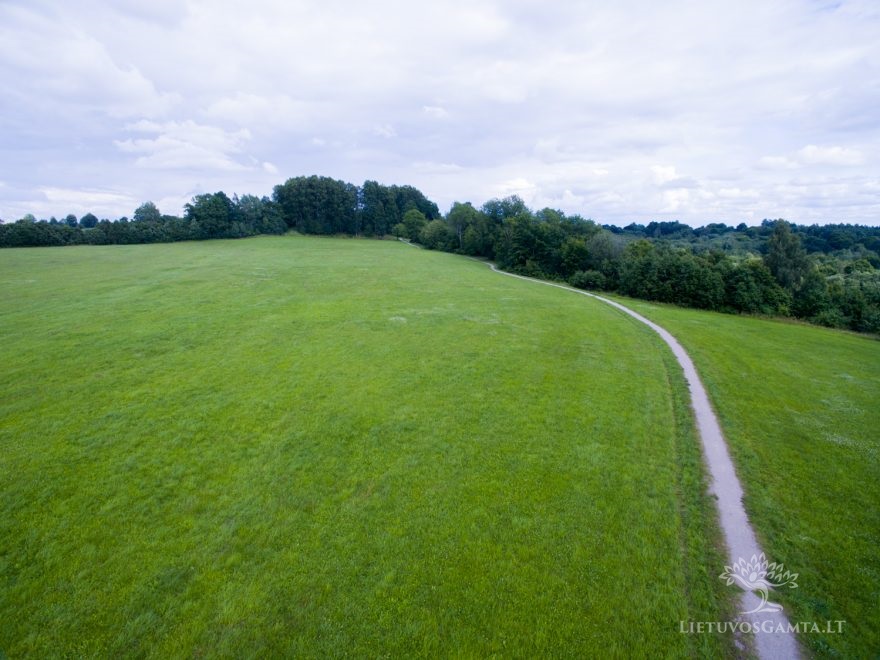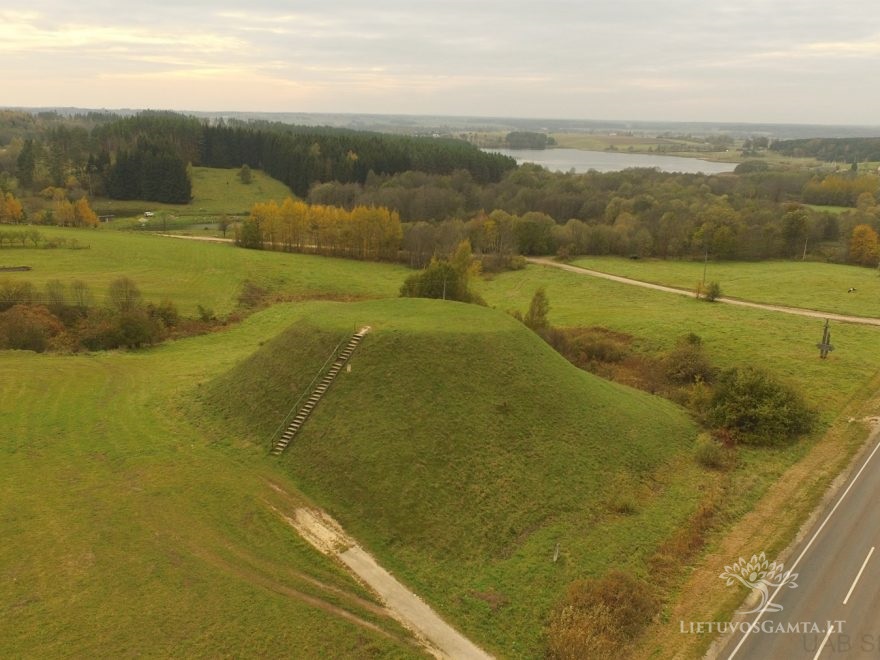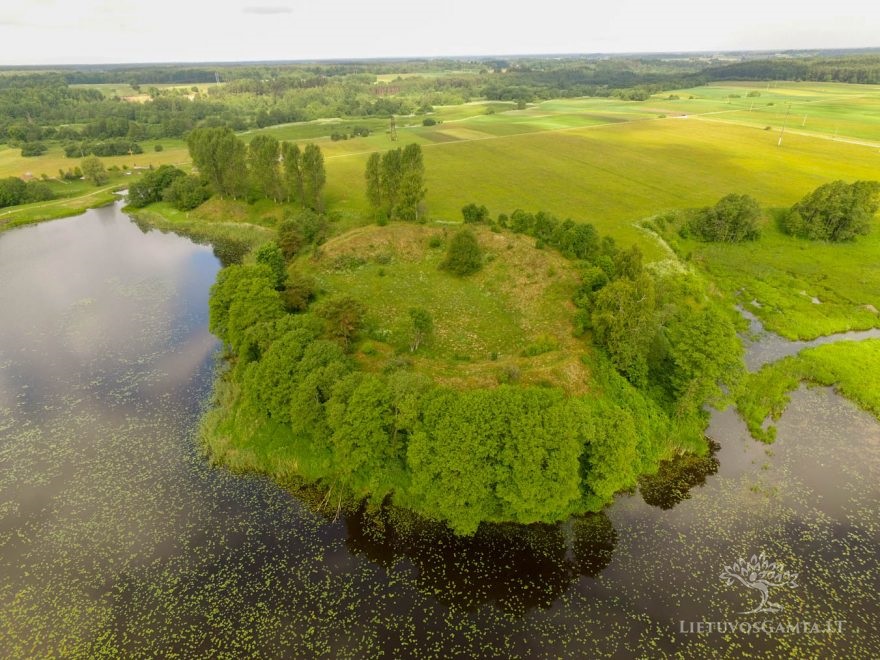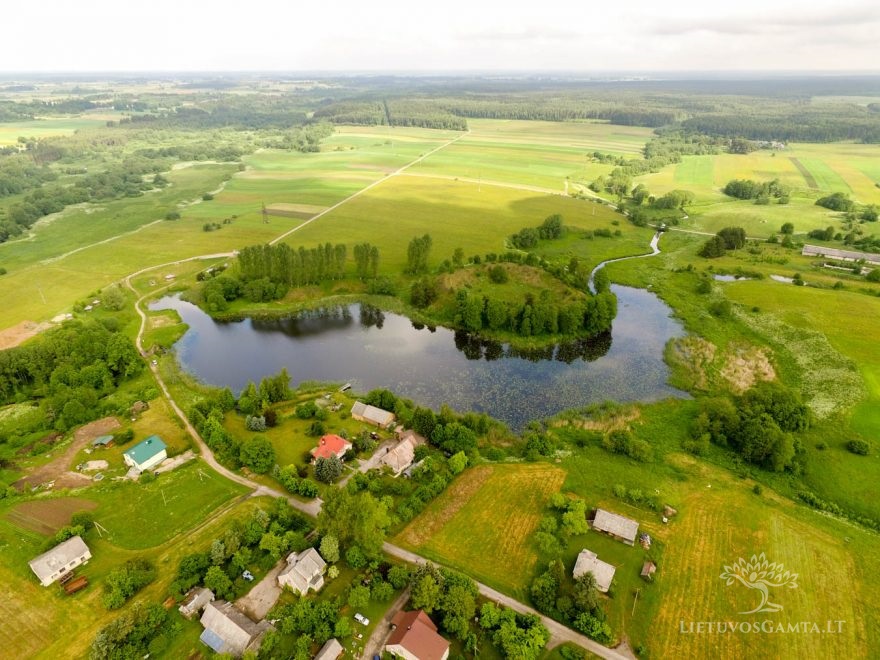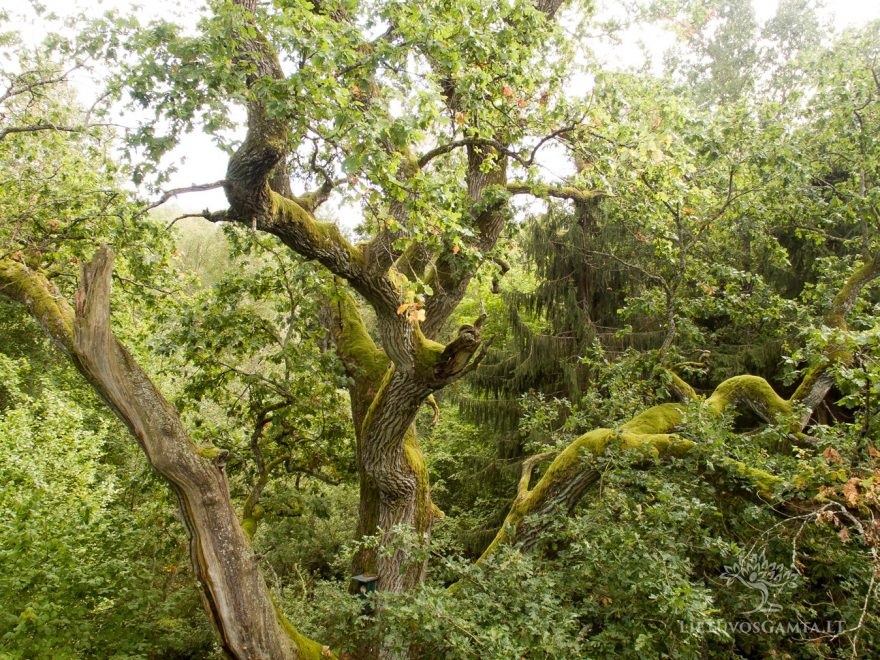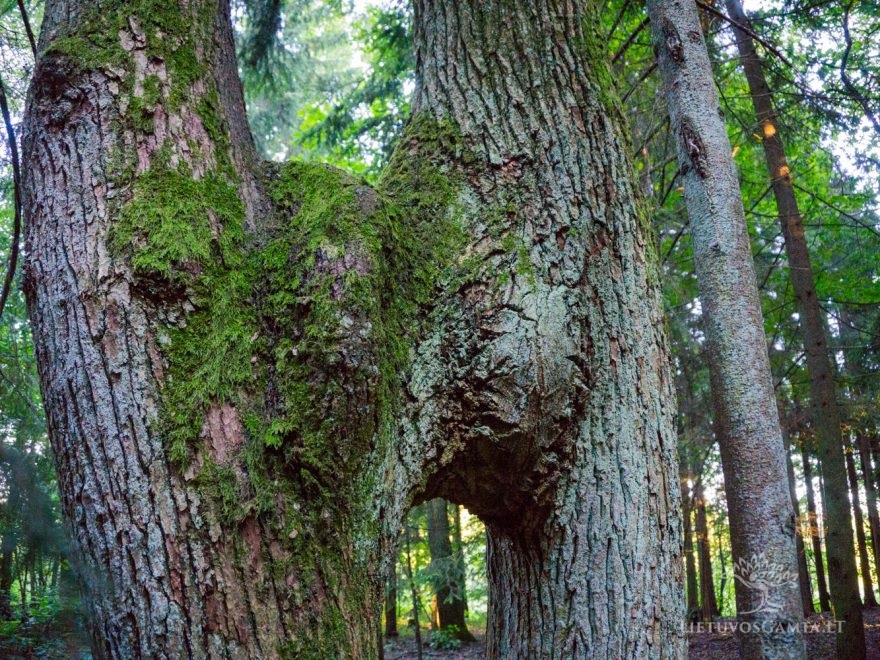Kartena mound with a settlement
Also called Pilis, Pilale, Hill of Sweds and Luztis Hill
Kartena eldership, Kretinga district
It is said that Kartena Mound, which is also called Luztis Hill, was built by Samogitians who fought against Swedes and Russians. There was a huge castle on that hill near Kartena. The castle was ruled by the Samogitian king. Swedish and Russian troops had once arrived at the same time to attack Samogitians. According to the legends, the name of Kartena originated during those battles. Swedes and Russians had caught up with each other in the valley of the River Minija as they could not reach the agreement who has the right of priority to attack the castle. The leader of Samogitians, who was watching the battle in the valley from the towers of the castle, exclaimed to his subordinates in Samogitian language: “Veizekiet, kare tenā!” (in Lithuanian “Ziurekite, karas tenai!“, in English “Look, the war is there“). Thereafter, the place is called Kartena. Some ancestors remember the battles with the entrants. For this reason, they preferred calling the mound the Hill of Swedes.
The old people recall that the things ended bad for the Samogitian king: he died together with a large number of the riders on the road between Kretinga and Kartena.
About midnight, dead military heroes come out of their coffin and exercise fighting with each other. The warriors are the flaming images, and the king appears dressed in white and rides the white horse. When the clock strikes one o’clock in the morning, the warriors and the king find their graves shouting: “The time will pass quickly and one day we will come again!“
It was soon discovered that the residence of the dead Samogitian king was a special place. The castle was surrounded with the waters of the River Minija. As the hill was not very tall, the billows of the water pounded almost reaching the walls of the castle. Three very large fishes lived in the water. They served the Samogitian king: they watchfully guarded the castle thus preventing the enemy from getting close to it. When the Samogitian king disappeared and the castle sank, the water subsided and a pond that still can be seen there had formed not far from the hill. One of the fishes still lives in the pond. […] Many people tried to catch the fish, but no one succeeded in doing so because the fish tears up every fishing net that is used to catch it. That terrible fish can be often seen during the night when it gets to the surface of the pond.
There was a foothill settlement nearby the hill, which people love to call simply a Castle (in Lithuanian Pilis) or Pilale, in the 13th century. The evidences from the days of the settlement, including fragments of pottery and items of brass that survived into the present, or the fragments of burnt bones, and even the traces of ancient houses and fireplaces, witness that the settlement was probably large, noisy and maybe even very rich.
If you will ever travel to Kretinga district, you should also visit Kartena. And when you will climb the stairs on the castle hill, stop for a moment: the spirit of the ancient Medieval times is still alive!

